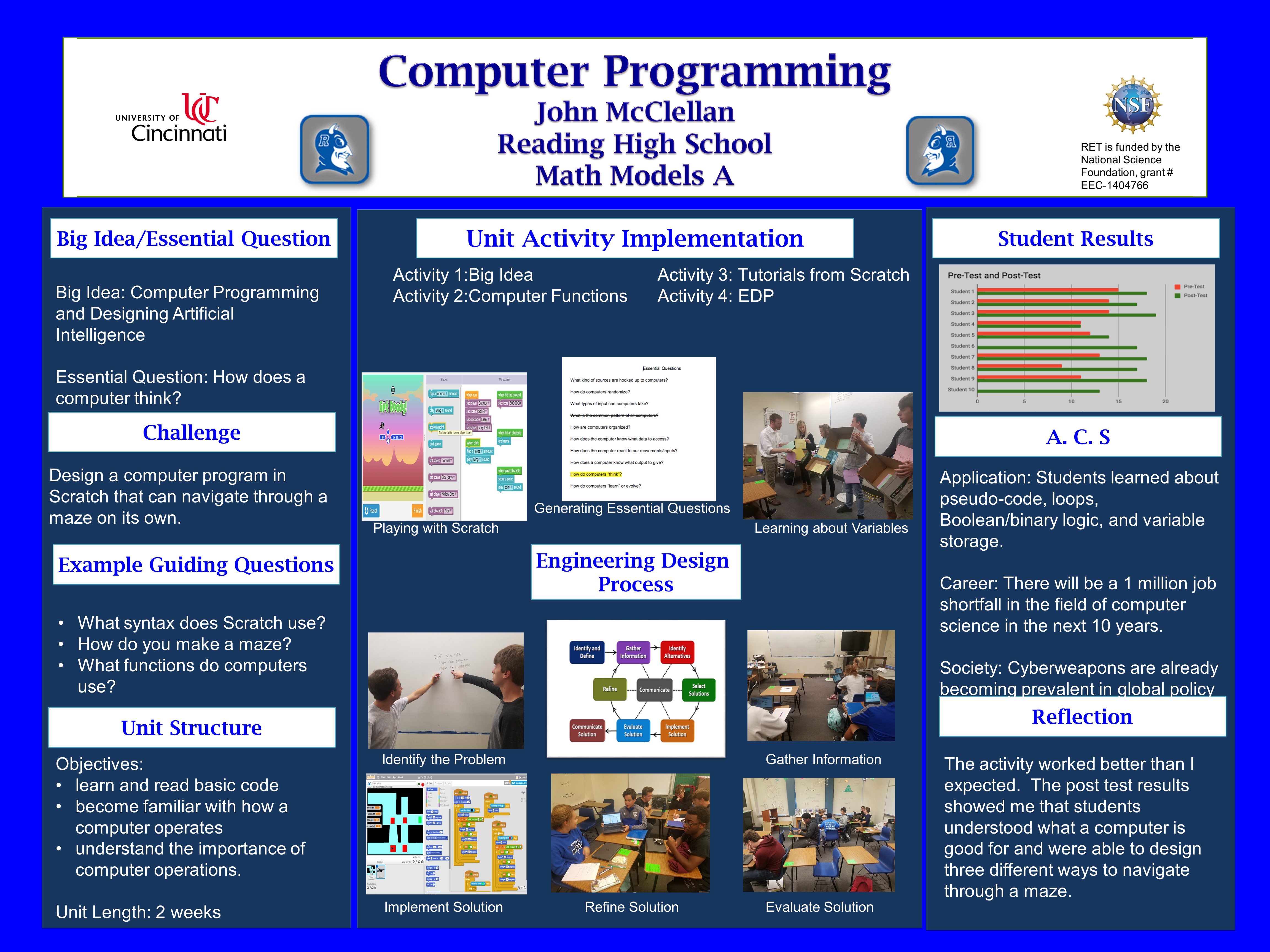Research Experience for Teachers (2017-2018)
Computer Programming with Scratch
 |
||||||
|
||||||
Keywords:
|
|
The Big Idea (including global relevance) Computer Programming for the Future - In ten years, there will be a 1 million workforce shortfall in the computer science sector. Many companies are looking for some proficiency or at least familiarity with computer programming. |
|
Essential Questions
|
|
The Hook Students are to gather into groups or pairs and share their favorite mobile game. A brief survey about the interaction of human and computer is handed out to record and guide their conversation. Students are given time to play various games if they haven’t before, and to write down a few notes based on some questions on the survey. After about 8 minutes of play, we will gather up and discuss each game and what elements of the game made it fun. |
|
The Challenge Use Scratch to assemble a character to run an automation function (like going the through the maze). Save the electric grid before time is up! |
|
Guiding Questions
|
ACS (Real world applications; career connections; societal impact)
Though game design and coding applies to the real world, the challenge itself focuses on the need for more confidence in programming, not in deep programming skills.
Most industries need employees who have some ability to read code; even with the basic syntax learned over the course of a couple weeks, students will be better off than they were prior to the class. I am hoping this unit inspires students to pursue further learning in this field.
Computer Scientist, Analyst, Computer Engineer, Cyber security. I will play a few select YouTube videos (probably from the ted talks and hour of code selection) to review the need for these careers for the coming generation.
Misconceptions
- Only “smart” people know how to code.
- I don’t need to know how to code for my future job.
- There aren’t that many jobs out there for coders.
- Computer programming is a boring subject.
- You need to know binary, 1’s & 0’s, to know even a little bit of programming.
Unit Lessons and Activities
- Lesson 1: How Computers Think – (4 days)
Lesson 1 will focus on teaching students the background on how computer work and what they are good for compared to human abilities. Students will structure and formalize the logic of conditional statements, loops, variable definition, and keyboard/mouse interaction.- Activity 1: Introduction of the Big Idea, Generating the Essential Question, Challenge & Guiding Questions (1 day)
- Activity 2: Introduction to Computer functions (3 days)
- Lesson 2: Coding With Scratch – (3 days)
Lesson 2 introduces students to the Scratch online coding software. Working through a number of tutorials, students are expected to apply what they have learned about how computers work to the specific syntax of Scratch. The Challenge will be to create their own (as a team) animation on Scratch that uses all the functions we have outlined.- Activity 3: “Flappy Bird” or other tutorials on Scratch (1 day)
- Activity 4: Design a Computer Program on Scratch that combines all the functions we outlined (2days)
- Evidence of CBL: Lesson 1, Activity 1
- Evidence of EDP: Lesson 2, Activity 4
Additional Resources
